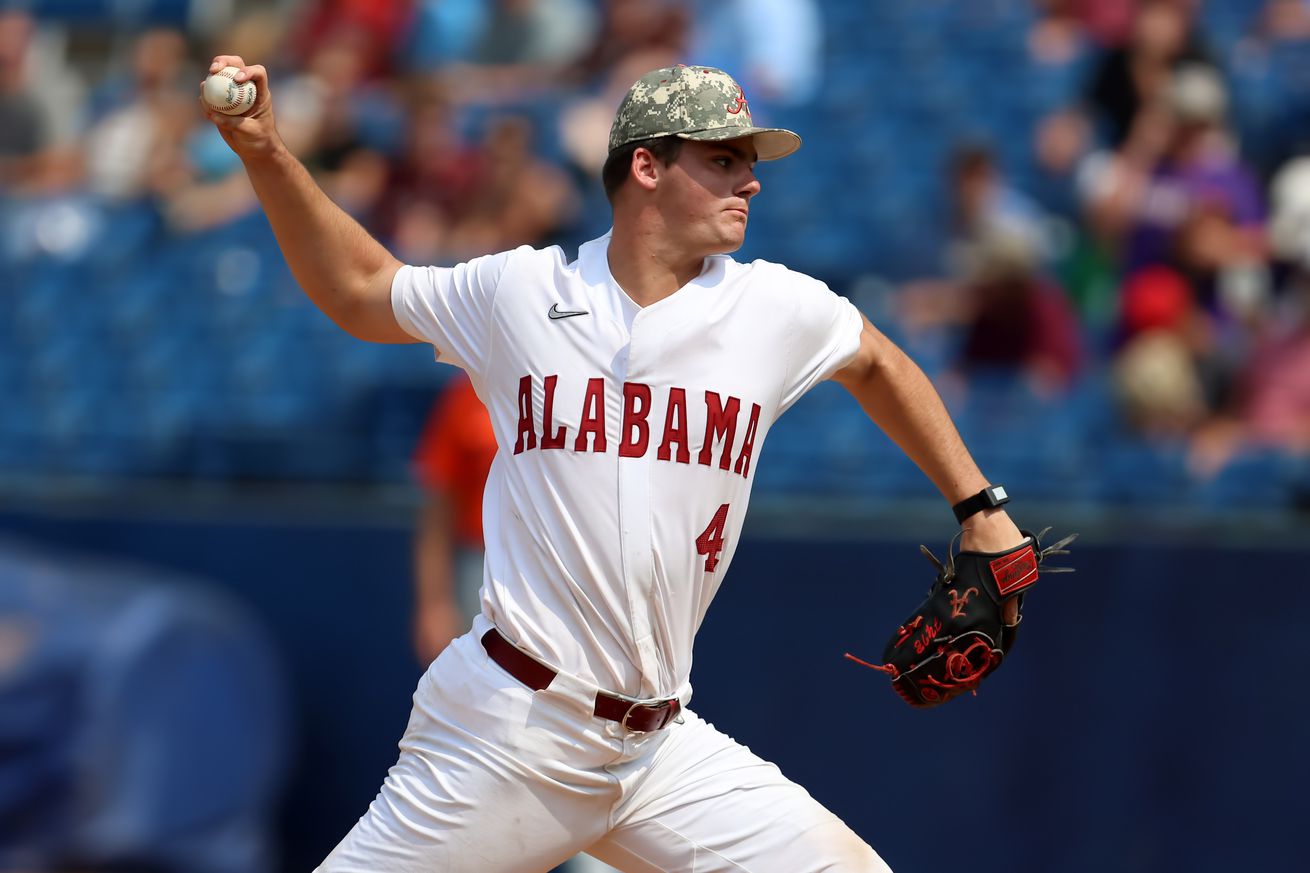
The Twins go with a big righty for their second selection of the night.
Breaking from their typical mold, the Twins went with a college pitcher for their second selection of the evening. Riley Quick out of Alabama became the Twins’ newest prospect, their first college pitching prospect selected in the first round since Tyler Jay back in 2015.
While he was drafted higher than usual, Quick fits the Derek Falvey pitching mold perfectly. The big righty (6’6”, 255 pounds, which might be generous underestimates) was recruited to play offensive line in college before settling on baseball for Alabama. His size, extension, and velocity make him a unique blend that has the potential to be a frontline starter if his health allows. At a bare minimum, his power fastball-slider combo could make him an impact reliever in the immediate future.
Quick didn’t put up outstanding stats in college, but you can clearly see the upside in the video below. In 62 innings for the Crimson Tide, Quick put up a 3.92 ERA and 10.2 strikeouts per nine innings, but simply gave up too many hits and walks with a 1.387 WHIP. You can see MLB Pipeline’s breakdown of the Twins’ newest prospect below.
MLB Pipeline Scouting Report (#38 ranked prospect):
Scouting grades: Fastball: 60 | Slider: 60 | Changeup: 50 | Control: 45 | Overall: 50
Quick was Alabama’s top high school baseball prospect in 2022, as well as a four-star offensive lineman who drew interest from college football programs, but he was determined to pitch for the Crimson Tide. After a successful freshman season in Alabama’s bullpen, he blew out his elbow in his first college start in 2024 and had Tommy John surgery. He returned quicker than normal, making it back for the start of the 2025 season and staying healthy other than missing a late-March start with a bad blister.
Quick has the power stuff to go in the first round, beginning with a heavy sinker that sits at 96-97 mph and tops out at 99, and the 6-foot-6, 255-pounder holds his velocity throughout his starts. His mid-80s slider can be a wipeout offering with two-plane depth, and he can turn it into a cutter that climbs as high as 95 mph. He also flashes a solid upper-80s changeup with fade and sink.
Though Quick’s fastball and slider grade as plus-plus at their best and he can back them up with a quality changeup, he doesn’t miss nearly as many bats as his pure stuff indicates he should. His pitches move so much that they can be difficult to harness, leaving him with decent control but spotty command. He has logged fewer innings than most third-year college pitchers and the hope is that he’ll approach his frontline-starter ceiling as he gains more experience and polish.
